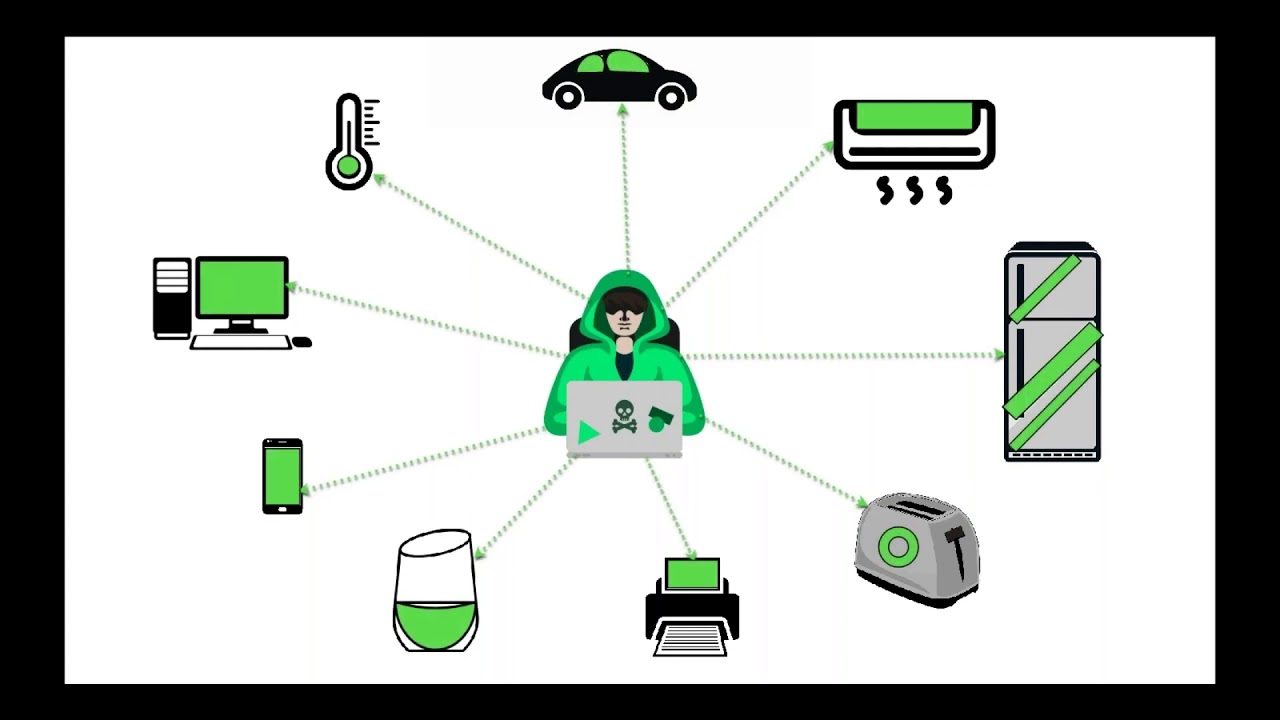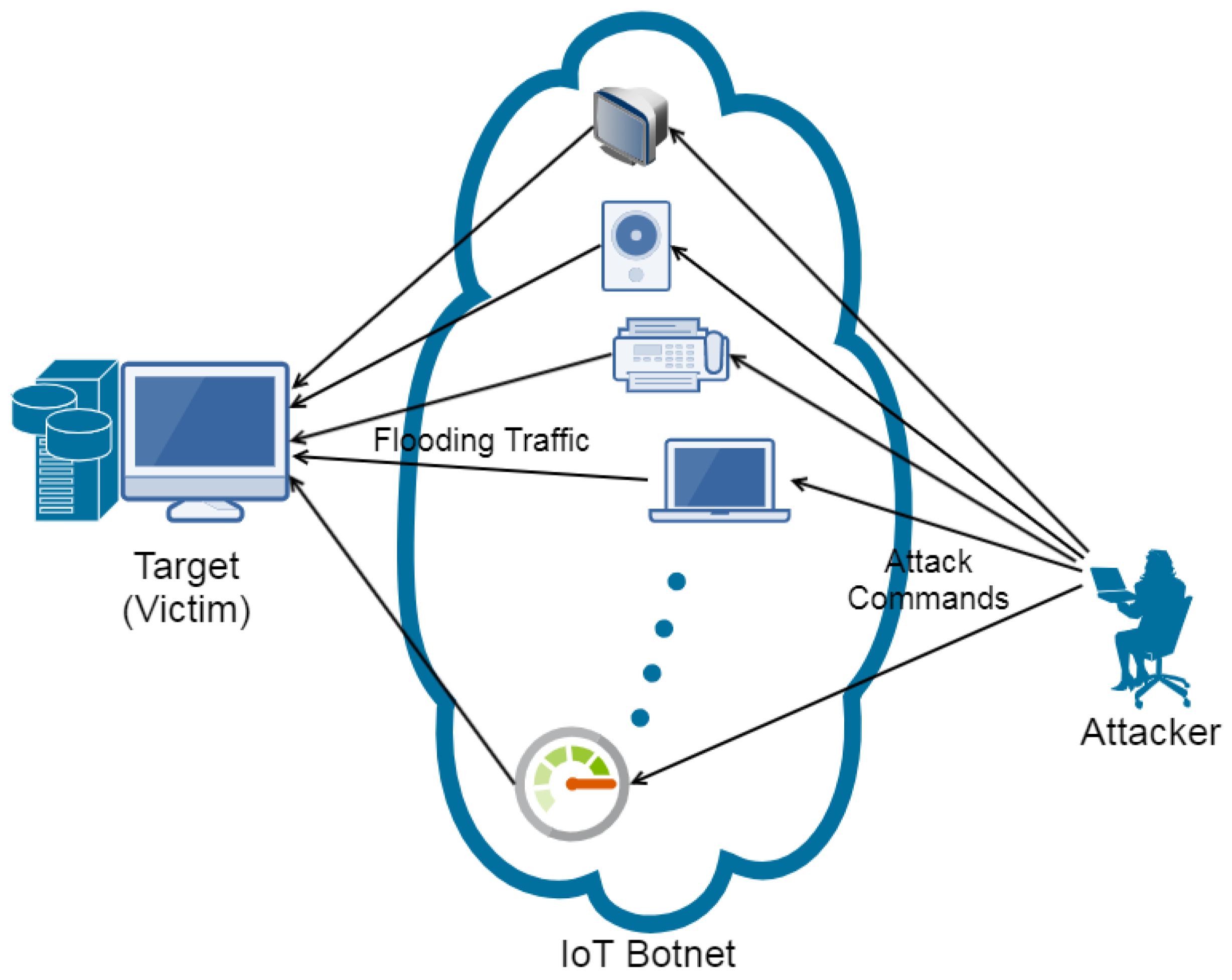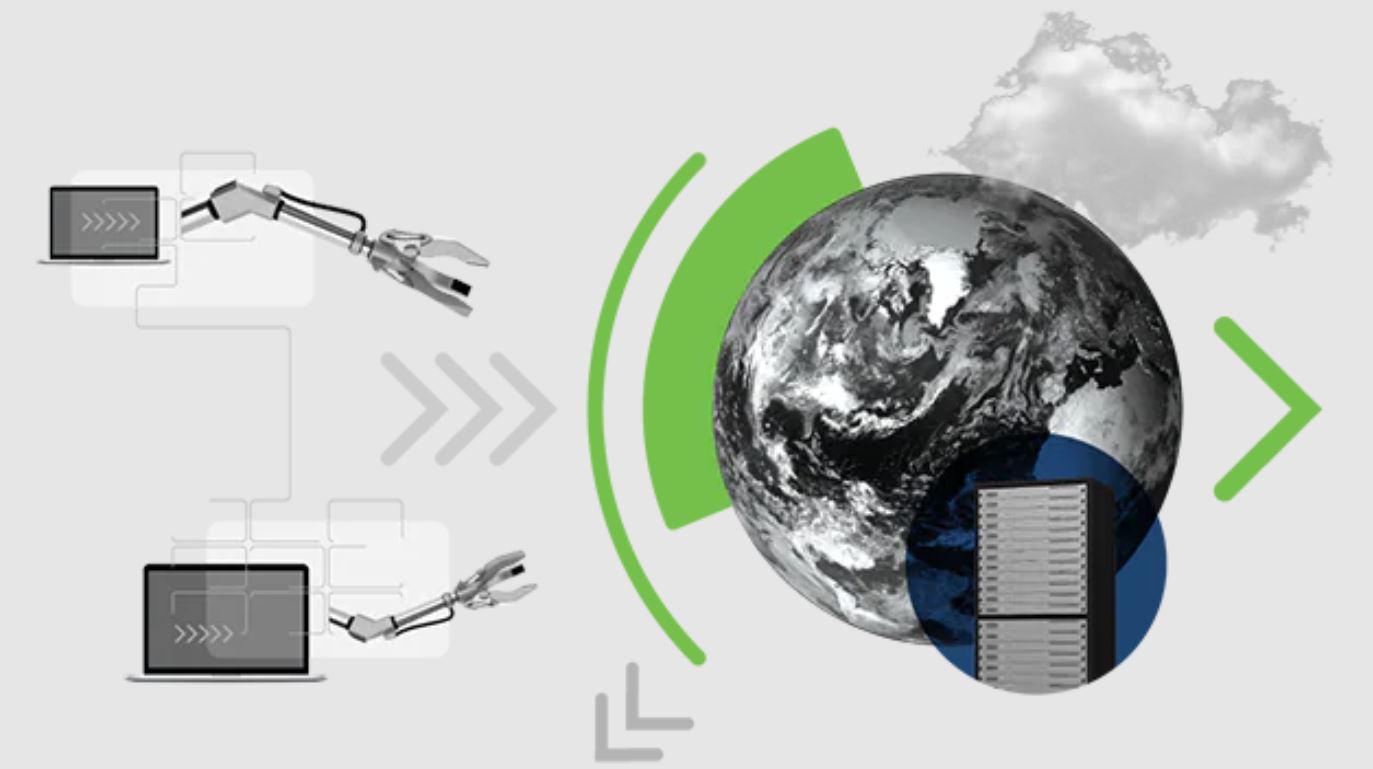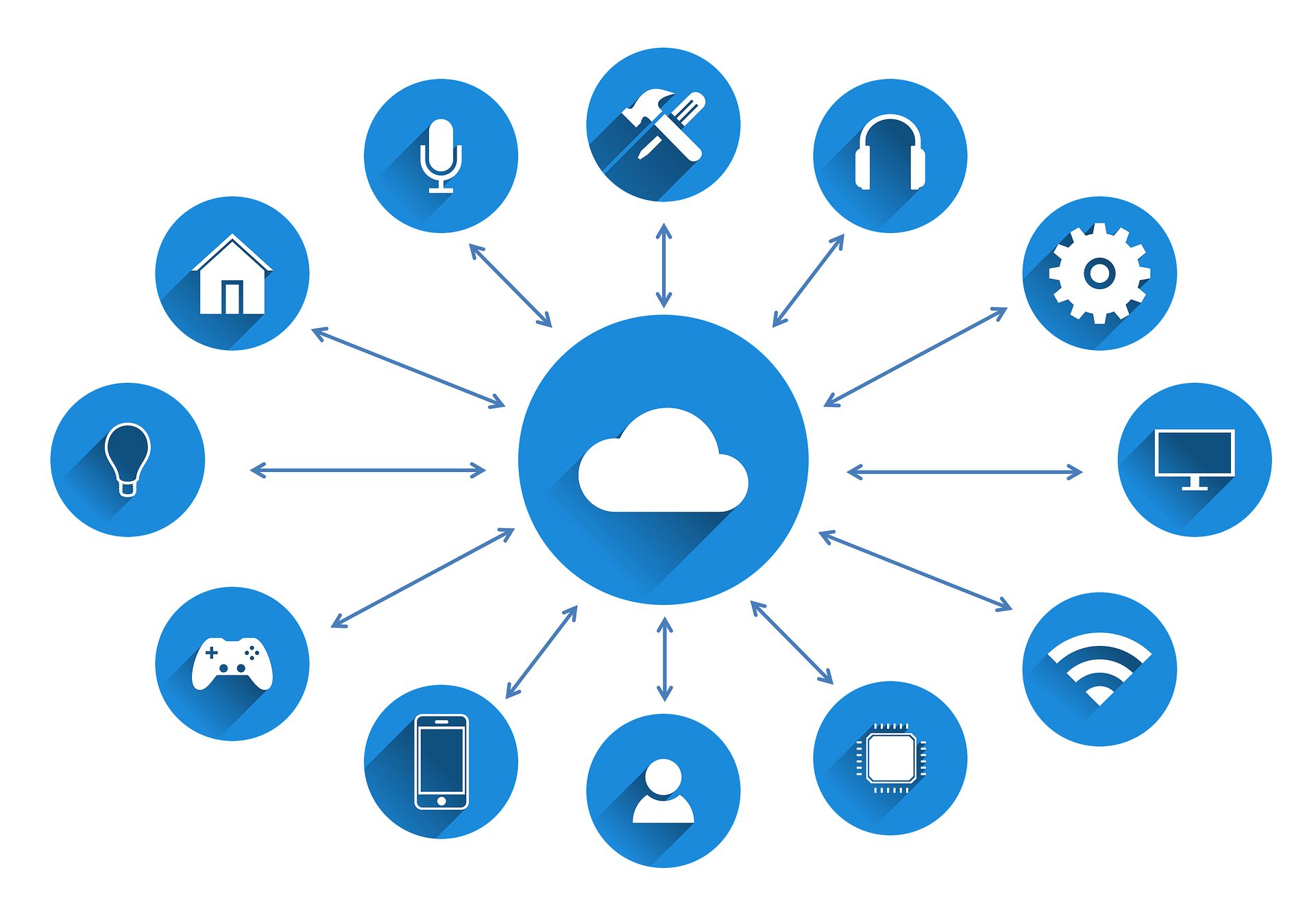Introduction
In the rapidly advancing digital landscape, the Internet of Things (IoT) has emerged as a transformative force. IoT devices, which encompass various interconnected smart devices, have revolutionized the way we interact with technology. From smart homes to connected cars, these devices offer convenience and efficiency in our daily lives. However, while the IoT brings numerous benefits, it also presents significant security challenges.
One of the most alarming threats in the IoT space is the Mirai botnet. This malicious software has made headlines for its ability to infect and control a vast network of IoT devices, turning them into remote-controlled bots used to launch devastating distributed denial-of-service (DDoS) attacks. The Mirai botnet has the potential to disrupt critical online services, cripple websites, and cause significant financial losses.
As the number of IoT devices continues to skyrocket, the vulnerability of these devices to cyber attacks becomes a major concern. Manufacturers often prioritize functionality and ease of use over security, leaving IoT devices exposed to exploitation. This article will delve into the rise of the Mirai botnet, the vulnerabilities in IoT devices, how the Mirai botnet attacks IoT devices, the impact of Mirai DDoS attacks, and what lies ahead for the future of IoT security.
The Mirai Botnet
The Mirai botnet, first discovered in 2016, represents a new breed of malware designed specifically to target and exploit IoT devices. Its main goal is to recruit vulnerable IoT devices into a zombie army capable of launching large-scale DDoS attacks. The name “Mirai” comes from the Japanese word for “future,” which is ironic considering the havoc it has wreaked on the present-day internet.
The Mirai botnet spreads by scanning the internet for IoT devices with weak or default credentials. These devices include routers, webcams, DVRs, and even smart refrigerators. Once the botnet gains access, it infects the device and adds it to its ever-expanding network of bots under the control of the botnet’s command and control (C&C) server.
The creators of Mirai designed it to be highly resilient and to withstand takedown attempts. The botnet employs a decentralized architecture, making it difficult for law enforcement and security professionals to dismantle. Mirai’s development and evolution since its initial discovery have seen the emergence of variants with additional capabilities and enhanced obfuscation techniques.
What makes the Mirai botnet particularly dangerous is its ability to generate massive volumes of internet traffic from the compromised IoT devices. Using coordinated attacks, the botnet overwhelms target websites or online services, causing them to slow down or become completely inaccessible to legitimate users. The scale and intensity of these attacks have the potential to disrupt key infrastructure and impact businesses, governments, and individuals worldwide.
While the original Mirai botnet was brought down and its creators apprehended, the code has been shared and modified, leading to the emergence of numerous Mirai-based botnets. This constant evolution highlights the ongoing challenges that security experts face in combating IoT-related threats. The rise of the Mirai botnet serves as a wake-up call for the urgent need to address the security vulnerabilities in IoT devices.
The Rise of IoT Devices
The proliferation of IoT devices has been nothing short of remarkable in recent years. From smart speakers and thermostats to fitness trackers and home security systems, IoT devices have found their way into various aspects of our lives. The convenience and connectivity they offer have fueled their rapid adoption across both consumer and industrial sectors.
One of the primary drivers behind the rise of IoT devices is the increasing demand for interconnectedness and automation. Consumers now expect their devices to seamlessly communicate with each other and provide real-time data and control. This desire for a connected lifestyle has paved the way for smart homes, where lights, appliances, and even door locks can be controlled remotely through smartphones or voice assistants.
IoT devices have also found extensive applications in industries such as manufacturing, agriculture, healthcare, and transportation. These sectors benefit from the ability of IoT devices to collect and analyze large volumes of data, enabling companies to optimize processes, reduce costs, and enhance decision-making.
Furthermore, the decreasing costs of IoT devices, coupled with advancements in wireless connectivity and cloud computing, have made them more accessible and affordable. This has enabled the widespread adoption of IoT devices by both consumers and businesses alike.
However, the rapid growth of IoT devices has also brought forth significant security concerns. Unlike traditional computing devices, such as laptops or smartphones, IoT devices often have limited processing power and memory. As a result, manufacturers prioritize functionality and ease of use over robust security measures. This leaves IoT devices vulnerable to cyber attacks, making them attractive targets for malicious actors like the creators of the Mirai botnet.
As the number of IoT devices continues to skyrocket, it is crucial that manufacturers, policymakers, and consumers prioritize the security of these devices. Collaborative efforts are needed to establish industry-wide standards for IoT security, ensuring that devices are built with strong authentication mechanisms, encryption protocols, and regular software updates to remediate vulnerabilities.
Vulnerabilities in IoT Devices
While IoT devices offer convenience and connectivity, they also present a myriad of vulnerabilities that can be exploited by cybercriminals. The rush to bring IoT devices to market often results in manufacturers overlooking critical security practices. This negligence leaves IoT devices susceptible to various types of attacks. Here are some common vulnerabilities found in IoT devices:
- Lack of robust authentication: Many IoT devices are shipped with default usernames and passwords, which are rarely changed by users. This makes them an easy target for attackers who can use default or easily guessable credentials to gain unauthorized access.
- Inadequate encryption: IoT devices often transmit and store sensitive data, such as personal information or financial details, without proper encryption. This exposes the data to interception and unauthorized access.
- Outdated firmware: IoT devices are rarely equipped with mechanisms to automatically update their firmware, leaving them vulnerable to known security vulnerabilities. This lack of regular updates makes it challenging for users to patch their devices against emerging threats.
- Lack of secure communication protocols: IoT devices may use insecure communication protocols that are susceptible to eavesdropping or man-in-the-middle attacks. Without proper encryption, hackers can intercept and manipulate data transmitted between devices and servers.
- Weak physical security: IoT devices are often deployed in uncontrolled environments, making them prone to physical attacks. Unauthorized individuals may gain physical access to the devices, allowing them to tamper with their settings or extract sensitive information.
These vulnerabilities in IoT devices create a fertile ground for cyber attackers to exploit. Once compromised, these devices can be used to launch various malicious activities, including DDoS attacks, data theft, device hijacking, and even surveillance. The Mirai botnet, for instance, leverages these vulnerabilities to infect a vast number of IoT devices and turn them into bots for executing DDoS attacks.
Addressing these vulnerabilities requires a multi-faceted approach. Manufacturers must prioritize security throughout the product development lifecycle, incorporating strong authentication mechanisms, encryption protocols, and automatic firmware updates into their devices. Users must also take responsibility for securing their IoT devices by changing default passwords, updating firmware regularly, and ensuring their home networks are properly secured.
Moreover, industry-wide collaboration and regulatory frameworks can play a crucial role in driving IoT security standards and best practices. By working together, manufacturers, policymakers, and security experts can create a safer IoT ecosystem that protects both users and the integrity of the devices themselves.
How the Mirai Botnet Attacks IoT Devices
The Mirai botnet employs sophisticated techniques to infect and compromise IoT devices, turning them into obedient bots ready to carry out its bidding. Understanding how the Mirai botnet attacks IoT devices is essential to comprehend the magnitude of the threat it poses. Here’s a closer look at the attack process:
- Scanning for vulnerable devices: Mirai relies on scanning techniques to identify IoT devices with weak or default credentials. It systematically searches for devices that are accessible via the internet, such as webcams, routers, or DVRs, and attempts to gain unauthorized access.
- Exploiting weak credentials: Once Mirai locates a vulnerable device, it uses a database of known default usernames and passwords to attempt to log in. It also leverages brute force techniques to guess weak or easily guessable passwords. Once successful, the botnet gains control of the device and establishes a connection to the command and control (C&C) server.
- Downloading and executing malware: After establishing a connection to the C&C server, the Mirai botnet downloads and executes the Mirai malware on the compromised device. This malware serves as the central command for controlling the botnet and launching coordinated attacks.
- Joining the botnet: The infected device becomes part of the Mirai botnet, ready to receive instructions from the C&C server. It awaits commands for launching various activities, ranging from DDoS attacks to data exfiltration.
- Participating in DDoS attacks: Mirai utilizes the collective power of the infected IoT devices to launch massive DDoS attacks. These attacks involve flooding target websites or services with an overwhelming amount of internet traffic, rendering them inaccessible to legitimate users.
The Mirai botnet is relentless in its search for vulnerable IoT devices, continuously scanning the internet for new victims to recruit into its ever-growing network. Its ability to compromise and control a vast number of IoT devices gives it tremendous power to carry out destructive attacks on a global scale.
To protect against Mirai and similar botnets, users must prioritize the security of their IoT devices. This includes changing default passwords, installing firmware updates regularly, and implementing robust access controls. Additionally, manufacturers must design devices with strong authentication mechanisms and encryption protocols while providing ongoing support to address emerging threats and vulnerabilities.
Impact of Mirai DDoS Attacks
The Mirai botnet’s ability to launch widespread distributed denial-of-service (DDoS) attacks has had a significant impact on the internet and its users. These attacks have far-reaching consequences for both individuals and organizations, affecting various aspects of online life. Here are some of the key impacts of Mirai DDoS attacks:
- Disruption of online services: Mirai-powered DDoS attacks have the potential to cripple target websites and services, causing extended periods of downtime. This disruption often impacts businesses, governments, and individuals who rely on these services for their day-to-day activities.
- Financial losses: DDoS attacks can result in substantial financial losses for businesses. These attacks can lead to decreased revenue due to website unavailability or the cost of mitigating the attack. Additionally, the damage to a company’s reputation can have long-term financial implications.
- Loss of customer trust: Successful DDoS attacks can erode customer trust in an organization’s ability to protect their data and provide reliable services. Customers may lose confidence in the security measures in place, leading to a loss of trust and potential customer churn.
- Infrastructure overload: Mirai-infected devices generate a massive amount of internet traffic, overwhelming network infrastructure and internet service providers. This can lead to degraded internet performance and connectivity issues for users who are not even directly targeted by the attack.
- Collateral damage: Mirai attacks are not always targeted at the intended victim. The massive scale of these attacks can cause collateral damage to other websites or services hosted on the same infrastructure, further escalating the impact and disruption.
The impact of Mirai DDoS attacks extends beyond immediate financial and operational consequences; it also highlights the broader security risks associated with unsecured IoT devices. The Mirai botnet exposed the vulnerability of these devices, sparking conversations about the urgent need for better security measures in IoT manufacturing and user practices.
To mitigate the impact of Mirai and similar DDoS attacks, organizations must invest in robust DDoS mitigation solutions and implement best practices to protect their infrastructure. This includes traffic monitoring, access control mechanisms, and collaboration with internet service providers to detect and mitigate attacks promptly.
Furthermore, improved security practices in IoT device manufacturing, such as secure default settings, regular firmware updates, and strong authentication mechanisms, are essential to prevent the creation of large-scale, botnet-powered DDoS attacks like Mirai in the future.
The Future of IoT Security
As the number of IoT devices continues to grow exponentially and the threat landscape evolves, the future of IoT security is both challenging and promising. Addressing the vulnerabilities in IoT devices and establishing a robust security framework are critical to protect users, businesses, and infrastructure. Here are some key areas that will shape the future of IoT security:
- Improved device security: Manufacturers must prioritize security in the design and development of IoT devices. This includes implementing strong authentication mechanisms, encryption protocols, and regular security updates. Building security into the device’s firmware and hardware components from the outset is crucial to minimize vulnerabilities.
- Standardization and regulation: Developing industry-wide security standards and regulatory frameworks is essential to ensure consistent security practices across IoT devices. Governments and industry organizations should collaborate to define minimum security requirements, establish certification programs, and enforce compliance with security guidelines.
- Enhanced authentication mechanisms: IoT devices should incorporate more advanced authentication methods beyond simple usernames and passwords. Multifactor authentication, biometrics, and device-to-device authentication can significantly enhance the security of IoT devices, making them less susceptible to unauthorized access.
- Data protection and privacy: As IoT devices collect and transmit vast amounts of data, protecting user privacy becomes paramount. Manufacturers and service providers must adopt robust data encryption, anonymization techniques, and transparent data usage policies to ensure the privacy and security of user information.
- Security-focused updates and patches: Timely and regular firmware and software updates are crucial for addressing emerging security vulnerabilities. Manufacturers should provide ongoing support to ensure that IoT devices remain secure throughout their lifecycle and release patches to address any known security flaws.
- Collaborative efforts against botnets: Collaboration between industry, government, and security researchers is vital in combating botnets like Mirai. Sharing threat intelligence, identifying vulnerabilities, and coordinating takedown operations can significantly weaken botnets and deter their creators from launching large-scale attacks.
The future of IoT security will require a collective effort from device manufacturers, consumers, policymakers, and security professionals. By prioritizing security, establishing industry standards, and embracing technological advancements, we can create a more secure and trustworthy IoT ecosystem. Proactive measures and ongoing vigilance are key to staying one step ahead of cyber threats and protecting the potential that the IoT offers in a connected world.
Conclusion
The rise of the Mirai botnet and the vulnerabilities in IoT devices serve as a wake-up call for the urgent need to prioritize security in the IoT space. The Mirai botnet demonstrated the capability of exploiting weak credentials and compromising a vast network of IoT devices to launch devastating DDoS attacks. These attacks can have significant impacts, including disrupting online services, causing financial losses, and eroding customer trust.
The future of IoT security lies in implementing improved device security measures, developing industry-wide standards, and enhancing authentication mechanisms. Manufacturers must prioritize security in the design and development of IoT devices, while governments and industry organizations must collaborate to establish robust security standards and regulations. Additionally, data protection, regular security updates, and collaborative efforts against botnets are essential elements in ensuring the security of IoT devices and the integrity of the IoT ecosystem.
As the number of IoT devices continues to grow and technology advances, it is crucial for all stakeholders to remain vigilant and proactive in addressing the ever-evolving threat landscape. By prioritizing security, embracing technological advancements, and working together, we can create a future where IoT devices are secure, reliable, and trusted. The potential of the IoT to transform various aspects of our lives can be fully realized only when security becomes an integral part of the IoT ecosystem.

























